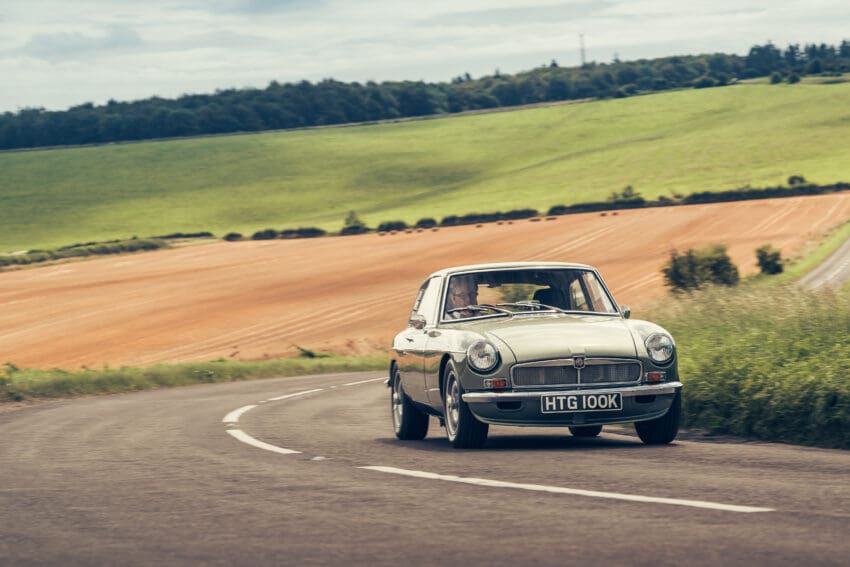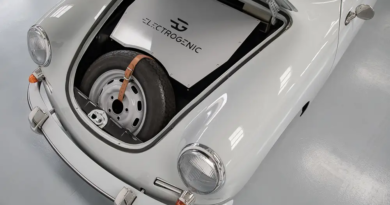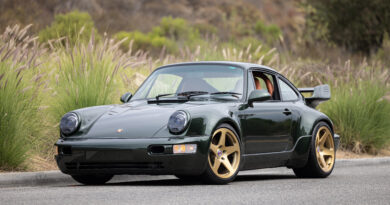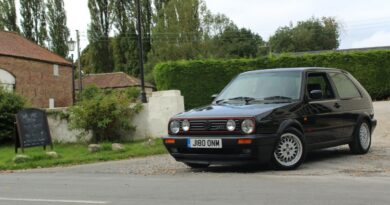Frontline MG BEE: joining the EV shift with this manual conversion
Does an electric classic car with a manual gearbox make any sense? I’ve been driving the Frontline MG BEE restomod to find out
“We weren’t sure about building an EV.”
So Conner Matthews of Frontline Cars tells me as we tour the firm’s spotless Oxfordshire workshop.
“We were really reluctant and said no several times. But so many customers kept asking that we decided to give it a try.”
It’s a strange way to introduce a new all-electric model but it’s also telling that since that initial reluctance, the MG BEE has become the in-house favourite and the car the Frontline team fight to take home at the weekend.
Frontline is famous for its MG restomods – restored and updated MG Bs that blend the classic MG shape with uprated engines, modern brakes, suspension and steering all developed in-house.
The engines range from fettled 1.8 originals to meaty 4.8-litre V8s and are a world away from the 40kW motor that nestles beneath the bodywork of the BEE. But there is a throughline between the cars.
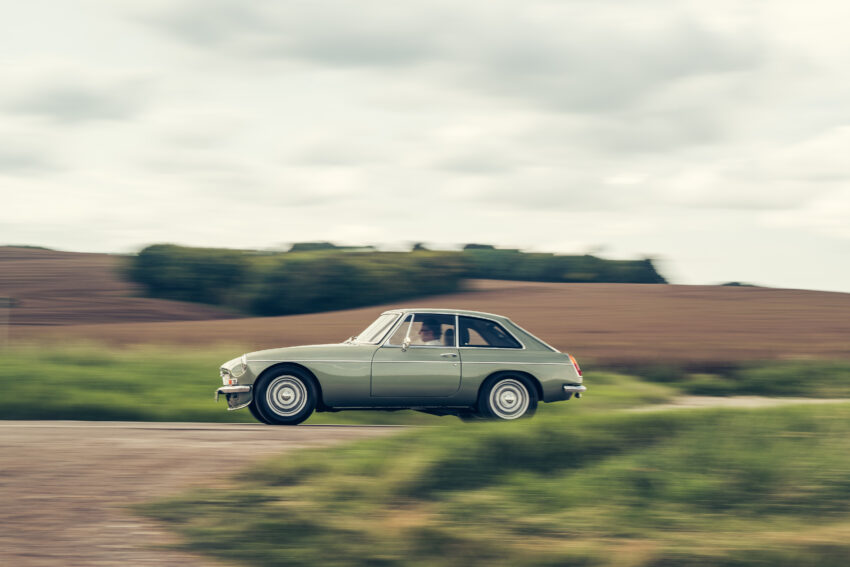
“It’s about preserving the classic car look and driving experience but just making it more usable day-to-day,” says Conner.
Which is why Frontline has taken a slightly different approach to electrifying a classic, with a real emphasis on sympathetically blending a 21st-century powertrain with a distinctly classic look and feel.
The car in question is a 1972 MG B coupe that was previously given the restomod treatment in 2012 to form one of the firm’s LE50 cars. Bought back from a customer, it forms the basis of Frontline’s first all-electric MG BEE – a proof of concept testbed that has already attracted customer orders.
On the surface there’s nothing to mark this BEE – finished in glorious sage green – out from any other restored example. The classic two-door lines are all present and correct (and neater than the day it came out of the Abingdon factory) and a set of race-style Dunlop steel wheels give some period-correct character. Even the chrome filler cap on the rear panel remains, although it now hides a Type 2 charging port.

Pop the bonnet, though, and in place of the humdrum B Series four-pot, you are faced with a leather-wrapped battery box housing 42kWh of Tesla cells. Frontline reckon that’s enough for around 100 miles of motoring but the first customer cars will get a range of 200 miles thanks to more capacity.
Energy from those cells is sent to a HyPer 9 motor, which in turn sends 54bhp to the rear wheels. But where the BEE differs from other electrified classics is that between motor and wheels is a traditional five-speed gearbox.
Frontline’s founder Tim Fenna started the business selling upgraded transmissions for racing MGs, so it’s fitting that one of the most interesting elements of the BEE is its gearbox.
Through the application of years of knowledge and technical wizardry, the Frontline team have paired a Mazda gearbox, complete with a clutch and flywheel with the off-the-shelf electric motor.
And that transmission really helps transform the BEE from just another electrified classic car into something more.
Often even really fast EVs can feel a little detached and sterile. There’s plenty of performance but not much involvement. With the BEE there’s involvement in spades and a real feel of a classic car.
Starting off is a little different. You dip the clutch, engage second then let out the clutch again. At which point nothing happens. But a gentle prod of the throttle and the motor’s torque pulls the car away.
From there, it’s just like any other classic manual car as the revs rise and you use the clutch and short-throw shifter to move up and down the ratios. You can even fluff the gear shifts, just like a petrol-powered version.
It’s a totally natural and mechanical feel akin to any classic car, despite the electric power source.
Unlike most EVs, there’s no attempt to mask the motor’s sound. Instead the developing whine is an integral part of the experience, rising in tone and indicating the right time to upshift, just like a regular ICE car. And the motor’s torque curve has been carefully calibrated to replicate the powerband of a petrol engine rather than deliver the instant low-end thump of most electric motors.
While some might bemoan that lack of immediate shove, it just helps reinforce the feeling that you’re still driving a classic car.
That’s compounded by carefully balanced power steering that has all the feel of an older motor without the arm-killing pain associated with unassisted racks. Find a twisting section of B road and you can chuck the BEE along, revelling in the old-fashioned weight and resistance of the steering. There’s even the slightest hint of hesitation as you change direction that’s more natural-feeling than any overly responsive electronic system.

The original LE50’s front double-wishbone and rear multilink suspension has been retained but adjusted to better match the new powertrain. Frontline says that the updated car weighs around the same as a petrol-powered version, with perfect 50/50 weight distribution, and that translates to a nimble and balanced feel on the road.
Undoubtedly, the BEE could be quicker – a 0-60mph time of just over 8 seconds means it’ll be outstripped from the lights by a Kia Niro. Using the right motor it could, most likely, be faster than Frontline’s 375bhp V8-powered LE60. But that’s not what the electrified model is about. The V8s are for those after the ultimate performance, the electric is about a more relaxed and accessible approach, one in which owners can enjoy afternoon pootles as well as B-road blasts.
Like the driving experience and the exterior, the interior of the BEE has a more traditional feel than some modern conversions. Where some companies fit digital dials and massive touchscreens, the Frontline’s cabin closely resembles an original 1970s one.
New electronic dials are cleverly disguised as original Smiths units and there are still simple toggle switches to control most functions. But those functions now stretch to electric windows and heated seats, and hidden beneath the surface is a Bluetooth sound system.
As with every part of a Frontline car, the interior is bespoke, so customers will be able to specify their own look and feel – from adding more modern equipment to selecting the particular finish of leather for the upholstery. They can even have the foam in the hand-built seats contoured to their body.

As you’d expect, the bespoke nature of the car and the level of technical expertise that goes into it means the BEE isn’t cheap. At around £120,000, it’s getting on for Porsche Taycan Turbo money. That’s a lot for something that is best regarded as a charming weekend toy – likely a second, third or fourth car bought partly due to nostalgia.
But if you have the money, that nostalgia is well served.
The brilliance of the BEE is that it still feels like an old car to drive. From the way its modest power is delivered to the ever-so-slightly vague steering and the physical engagement of working the five-speed ‘box.
But because it’s a restomod it doesn’t creak, rattle or groan like an old car. And the electric powertrain means simple, low-maintenance usability that will encourage owners to make the most of their cars rather than viewing them as temperamental museum pieces.

